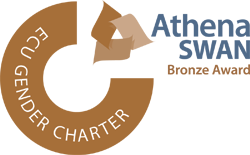Medieval Literature Class
Whan that Aprill with his shoures soote
The droghte of March hath perced to the roote,
And bathed every veyne in swich licour
Of which vertu engendred is the flour;
Whan Zephirus eek with his sweete breeth
Inspired hath in every holt and heeth
The tendre croppes, and the yonge sonne
Hath in the Ram his half cours yronne,
And smale foweles maken melodye,
That slepen al the nyght with open ye
(So priketh hem nature in hir corages),
Thanne longen folk to goon on pilgrimages,
And palmeres for to seken straunge strondes,
To ferne halwes, kowthe in sondry londes;
And specially fram every shires ende
Of Engelond to Caunterbury they wende,
The hooly blisful martir for to seke,
That hem hath holpen whan that they were seeke.
Bifil that in that seson on a day,
In Southwerk at the Tabard as I lay
Redy to wenden on my pilgrymage
To Canterbury with ful devout corage,
At nyght was come into that hostelrye
Wel nyne and twenty in a compaignye
Of sondry folk, by aventure yfalle
In felaweshipe, and pilgrimes were they alle,
That toward Caunterbury wolden ryde.
The chambres and the stables weren wyde,
And wel we weren esed atte beste.
And shortly, whan the sonne was to reste,
So hadde I spoken with hem everichon
That I was of hir felaweshipe anon,
And made forward erly for to ryse,
To take oure wey ther as I yow devyse.
Developing Your Thoughts
The most obvious contrast is in its point of view: whereas the first sentence has an unspecified and universal point of view, the second set of lines is consistently governed by the first person singular personal pronoun 'I', or the first person plural personal pronoun 'we'. In these three sentences the vision of narration is wholly determined by what the narrator experienced. The narrator stands in relation to an audience here, too: he addresses the 'yow' of line 34. His position in time is also different: whereas lines 1-18 describe an annual, cyclical event, the rest of the excerpt narrates a specific moment in time as experienced by the narrator. Chronological reference here is not to 'April' or the 'Ram', but rather to a specific 'day', to the sun being at 'reste', or to making an agreement to rise 'erly' next day.
Why do we assume a masculine narrator? Nothing in the passage in fact confirms this, but we might assume that a lone pilgrim in a medieval text is more likely to be male (even if Margery Kempe offers a counter example). We would need more of the text to test this assumption.
From our careful analysis of lines 1-18, in fact, we can contrast each of the features observed there with what we see in lines 19-34:
- The register of the diction is no longer scientific and technical, but rather drawn from an everyday world of buildings ('chambres and stables') and places, some of which have no religious significance (the 'Tabard'). The diction is in part that of the tourist trade ('hostelrye', 'compaignye', 'chambres', 'esed'). Whereas the sun in line 7 is an astronomical sphere moving through its annual cycle, the sun in line 30 is part of the quotidian, everyday world, setting after a single day.
- The syntax is, as we observed earlier, much less tightly organised. The elements of the sentence in lines 19-27, for example, are loosely joined, with adjectival phrases ('Redy to wenden on my pilgrimage...') and subordinate clauses ('That toward Canterbury wolden ryde') tacked on to create a sentence whose basic structure flows from its first word ('Bifil'). Whereas the sentence of lines 1-18 rises to and falls from the syntactic climax ('Thanne longen...'), this sentence falls from a main verb that is given immediately. There is no syntactic tension in this sentence, and it is the syntax fit for extended narrative. Whereas the first sentence is a self-enclosed picture of the cosmos, the second sequence establishes the conditions for extended narrative.
- Because the syntax is looser, the metre also operates in a more relaxed way, with many examples of enjambement in, say, lines 23-26; this creates a more informal, conversational effect, as the verse does not draw attention to its own patterning.
- Lines 18 to 34 are almost wholly literal, with one bare metaphor in line 30 ('the sonne was to reste'). Lines 1-18, by contrast, frequently personify the forces of nature: 'Aprill', 'Zephirus', 'the yonge sonne', 'nature', and deploy corresponding verbs in metaphorical senses: 'inspired', 'hath yronne', 'priketh'.
In short, these two sequences of verse are highly contrastive stylistically. Lines 1-18 are tightly organised syntactically, lexically elevated, rhetorically colourful, and narrated from a universal point of view to no particular audience. The second sequence of sentences contrasts in each respect: they are narrated from a very specific, chronologically delimited, point of view, and directed to a specific audience; their informal syntax avoids tension; their diction is not technical, and is drawn from a material world of everyday reality; and they are rhetorically plain.
Why should the poet juxtapose these stylistically contrastive sequences? An answer to this question moves from the observation of distinct elements of style to a larger sense of why those elements of style should be deployed in the way they are.
©James Simpson 2000

